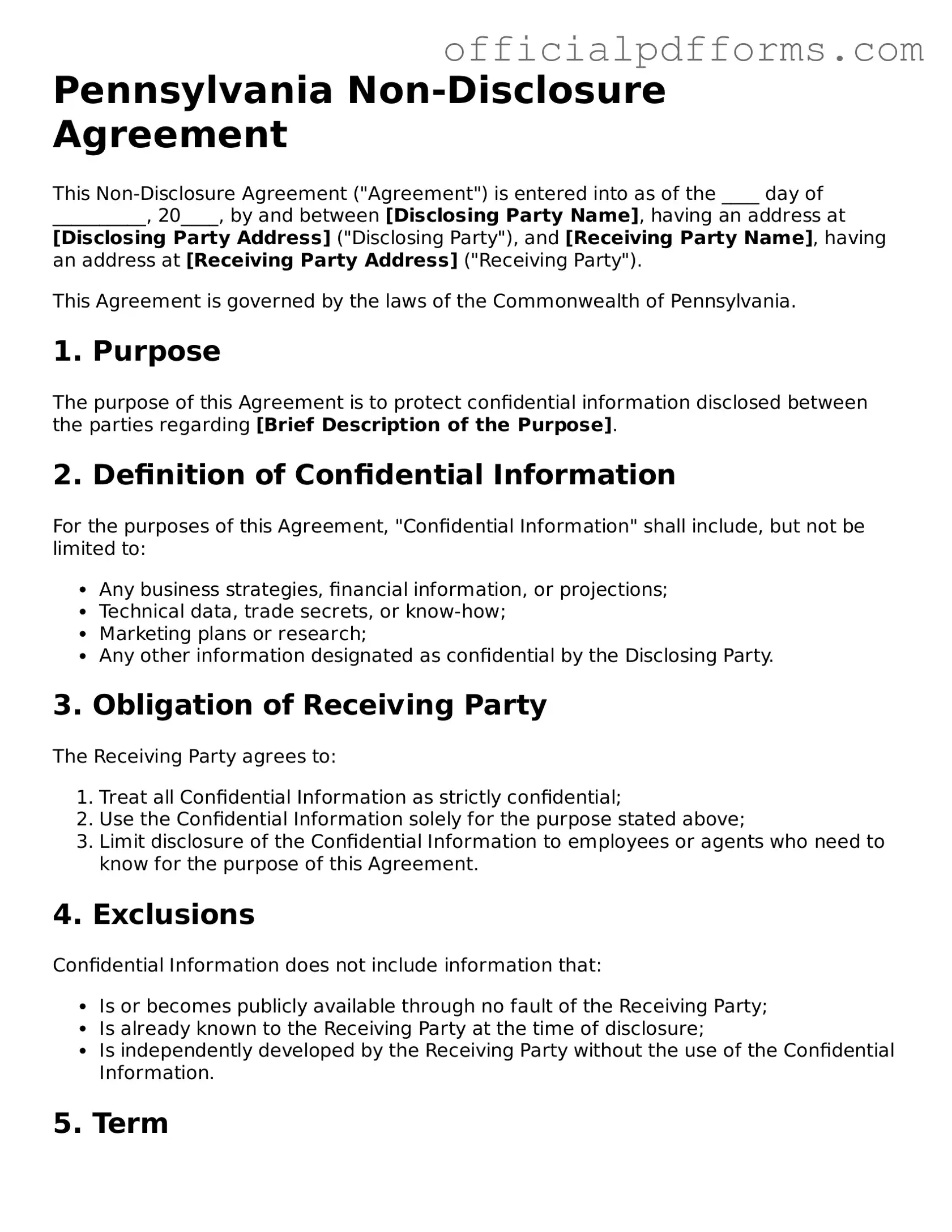Printable Pennsylvania Non-disclosure Agreement Template
A Pennsylvania Non-disclosure Agreement (NDA) is a legal contract designed to protect confidential information shared between parties. By outlining the terms of confidentiality, this form helps ensure that sensitive information remains secure. If you need to safeguard your business secrets, consider filling out the NDA form by clicking the button below.
Access Form Online
